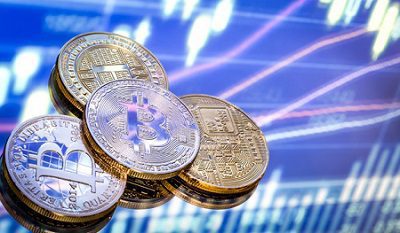Jayme Petra de Mello Neto
Lawyer at Marcos Martins Advogados
After several rounds of discussion, the Central Bank has released the general guidelines for the creation of a Brazilian digital currency. The subject has aroused a lot of doubt and suspicion, but the agenda could be extremely positive for our country’s economy.
Money, as we know it today, has come a long way. Primitive man, in his quest to satisfy his individual needs, began bartering, which was nothing more than the exchange of goods. This system lasted for centuries and eventually evolved into the creation of a single standard for exchanges, such as salt, which even gave rise to the word salary.
As early as the 7th century BC, coins were created, which represented values minted in metal. The price of each commodity was established according to a specific number of coins that marked the amount needed to pay for each good. Each kingdom or city-state created its own, stamping the faces of monarchs and maintaining a referential value with the state – which is backed by the amount of gold bars that each national treasury has.
This mechanism has remained practically intact until now, with the small variation that was the introduction of paper bills and the reference standards no longer in the National Treasury, but in the Pound, the Dollar, until technology provided the emergence of cryptocurrencies – which, contrary to what many people think, are not currencies, but digital assets created based on algorithms and programming resources. These crypto-assets do not exist physically, as is the case with paper money. Based on a relationship of trust, the first cryptocurrency was Bitcoin, mined by Satoshi Nakamoto, the pseudonym of its creator. The aim was to launch a possibility of decentralized financial exchange between physical institutions and without being subject to government regulation.
The technological advance behind the crypto-asset caught the attention of the National Treasuries, who began to envision the possibility of actually introducing a digital currency. The proposal is now to take another step in the evolution of the global financial system. The issue has been advancing mainly in countries such as China, which has already implemented its own currency, and the United States, which has set a timetable of 2025 to launch its version of the Digital Dollar.
Unlike crypto-assets, digital currencies are controlled by the state, i.e. they have sovereign issuance, the power to release obligations and forced circulation, which means that they should become the country’s recurring currency, so that the Real as it exists today simply ceases to exist to make way for the Digital Real.
In practice, the dematerialization of the banknote through so-called plastic money, which are credit and debit cards, already exists and would not represent an absolute novelty.
The difference is that digital currency and cryptoassets, such as Bitcoin, circulate in an unregulated network (Blockchain) with no reference to a Treasury, which means that there is a risk that users will lose confidence because they don’t have a minimum effective exchange value for those algorithms. With Real Digital, the risk becomes the Central Bank’s, and the exchange value is potentially referenced to the Brazilian National Treasury.
The proposal includes many benefits, but also some challenges. The most favorable of these is the impact on international trade. The Central Bank’s proposal is that the novelty will enable interoperability and integration, with the aim that it can be used for cross-border payments. However, there is still no certainty about the parity of exchange rates. Even so, the ease of operation could greatly benefit an export-oriented country like Brazil.
In addition, the digital currency is traceable, reducing the possibility of money laundering. Another advantage is that paper money is also quite expensive, since printing banknotes and metal costs the Union a lot, which would simply cease to exist with the new currency. Not to mention the reduction in bank and business robberies, which are still a constant target for criminals.
On the other hand, the big challenge lies in the operationalization of the new currency. The Central Bank still doesn’t have all the answers. Although cell phones are widespread in our country, it is undeniable that the less privileged population still does not have easy access to these devices or the related infrastructure. Including these people in a digital financial system doesn’t seem like a very simple equation to solve.
Although discussions are progressing, it is not yet possible to predict when we will have Real Digital. The Central Bank promises to listen to society through a series of seminars and possible public hearings. This stage should last around two or three months. If everything goes according to plan, the new financial system should come into force within two to three years. The expectation is that the operational challenges will be overcome and the country will effectively benefit from a safer and less bureaucratic currency.
About Marcos Martins Advogados:
Founded in 1983, Marcos Martins Advogados is highly regarded in the areas of Corporate, Tax, Labor and Business Law. Based on values such as commitment, ethics, integrity, transparency, responsibility and the constant specialization and improvement of its professionals, the firm positions itself as a true partner for its clients.
Source: SEGS








